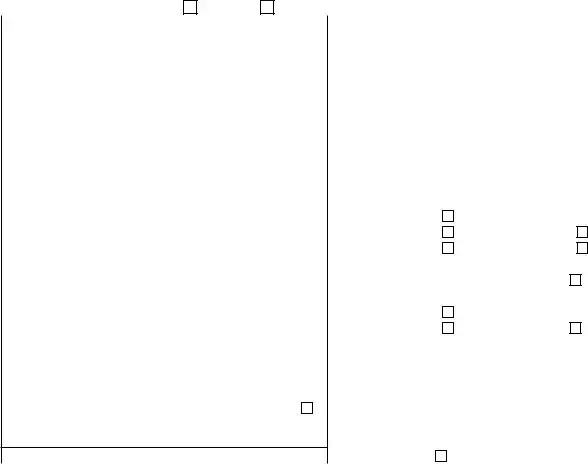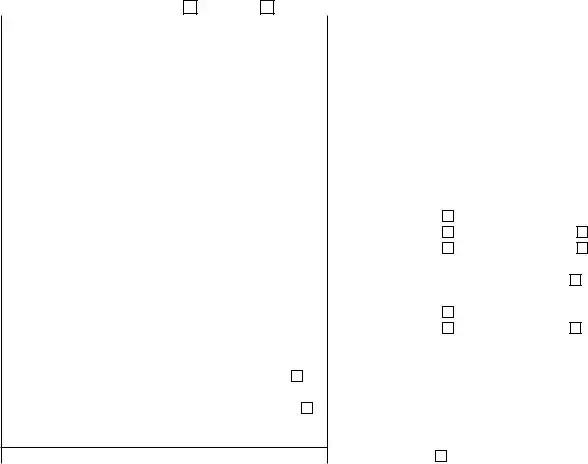Instructions for Recipient (continued)
Box 1f. Shows the amount of accrued market discount. For details on market discount, see the Schedule D (Form 1040) instructions, the Instructions for Form 8949, and Pub. 550. If box 5 is checked, box 1f may be blank.
Box 1g. Shows the amount of nondeductible loss in a wash sale transaction. For details on wash sales, see the Schedule D (Form 1040) instructions, the Instructions for Form 8949, and Pub. 550. If box 5 is checked, box 1g may be blank.
Box 2. The short-term and long-term boxes pertain to short-term gain or loss and long-term gain or loss. If the “Ordinary” box is checked, your security may be subject to special rules. For example, gain on a contingent payment debt instrument subject to the noncontingent bond method is generally treated as ordinary interest income rather than as capital gain. See the Instructions for Form 8949, Pub. 550, or Pub. 1212 for more details on whether there are any special rules or adjustments that might apply to your security. If box 5 is checked, box 2 may be blank.
Box 3. If checked, proceeds are from a transaction involving collectibles or from a Qualified Opportunity Fund (QOF).
Box 4. Shows backup withholding. Generally, a payer must backup withhold if you did not furnish your TIN to the payer. See Form W-9 for information on backup withholding. Include this amount on your income tax return as tax withheld.
Box 5. If checked, the securities sold were noncovered securities and boxes 1b, 1e, 1f, 1g, and 2 may be blank. Generally, a noncovered security means: stock purchased before 2011, stock in most mutual funds purchased before 2012, stock purchased in or transferred to a dividend reinvestment plan before 2012, debt acquired before 2014, options granted or acquired before 2014, and securities futures contracts entered into before 2014.
Box 6. If the exercise of a noncompensatory option resulted in a sale of a security, a checked “Net proceeds” box indicates whether the amount in box 1d was adjusted for option premium.
Box 7. If checked, you cannot take a loss on your tax return based on gross proceeds from a reportable change in control or capital
structure reported in box 1d. See the Form 8949 and Schedule D (Form 1040) instructions. The broker should advise you of any losses on a separate statement.
Regulated Futures Contracts, Foreign Currency Contracts, and Section 1256 Option Contracts (Boxes 8 Through 11)
Box 8. Shows the profit or (loss) realized on regulated futures, foreign currency, or Section 1256 option contracts closed during 2022.
Box 9. Shows any year-end adjustment to the profit or (loss) shown in box 8 due to open contracts on December 31, 2021.
Box 10. Shows the unrealized profit or (loss) on open contracts held in your account on December 31, 2022. These are considered closed out as of that date. This will become an adjustment reported as unrealized profit or (loss) on open contracts—12/31/2022 in 2023.
Box 11. Boxes 8, 9, and 10 are all used to figure the aggregate profit or (loss) on regulated futures, foreign currency, or Section 1256 option contracts for the year. Include this amount on your 2022 Form 6781.
Box 12. If checked, the basis in box 1e has been reported to the IRS and either the short-term or the long-term gain or loss box in box 2 will be checked. If box 12 is checked on Form(s) 1099-B and NO adjustment is required, see the instructions for your Schedule D (Form 1040) as you may be able to report your transaction directly on Schedule D (Form 1040). If the “Ordinary” box in box 2 is checked, an adjustment may be required.
Box 13. Shows the cash you received, the fair market value of any property or services you received, and the fair market value of any trade credits or scrip credited to your account by a barter exchange. See Pub. 525.
Boxes 14–16. Show state(s)/local income tax information.
Future developments. For the latest information about any developments related to Form 1099-B and its instructions, such as legislation enacted after they were published, go to www.irs.gov/Form1099B.
Free File Program. Go to www.irs.gov/FreeFile to see if you qualify for no-cost online federal tax preparation, e-filing, and direct deposit or payment options.






 CORRECTED (if checked)
CORRECTED (if checked)

 CORRECTED (if checked)
CORRECTED (if checked)
